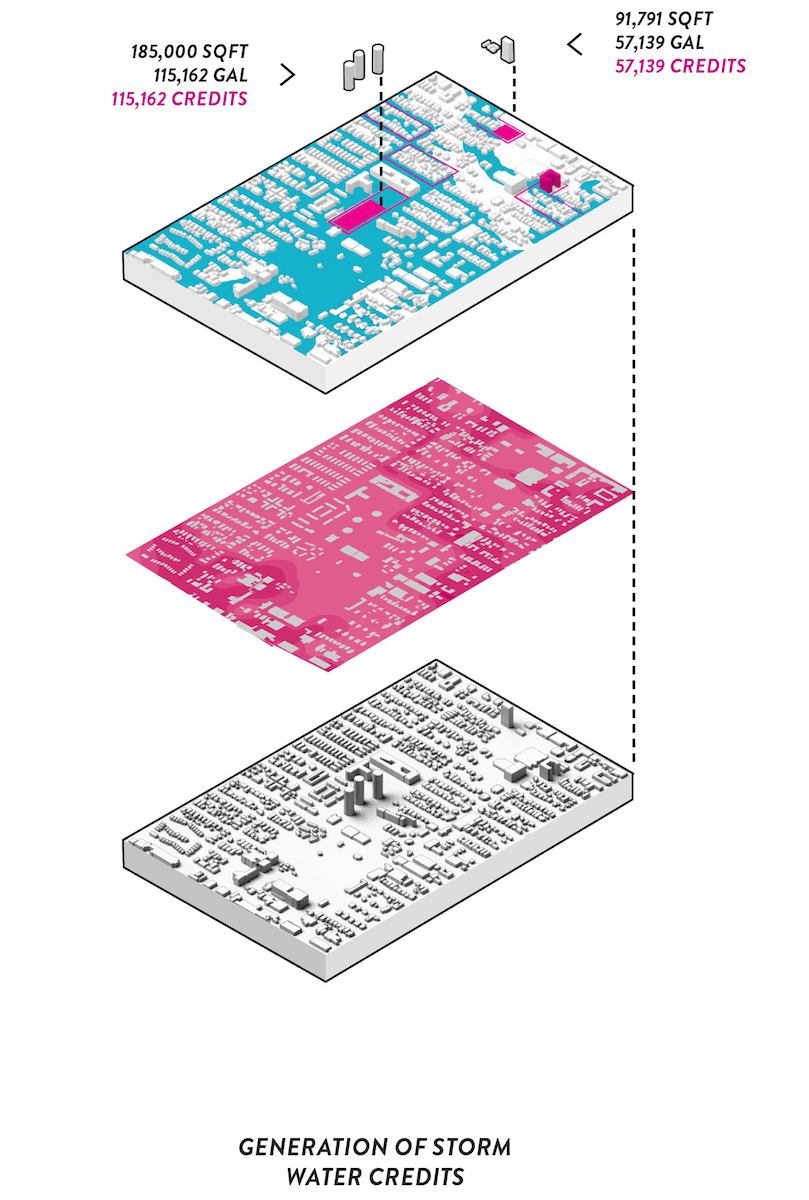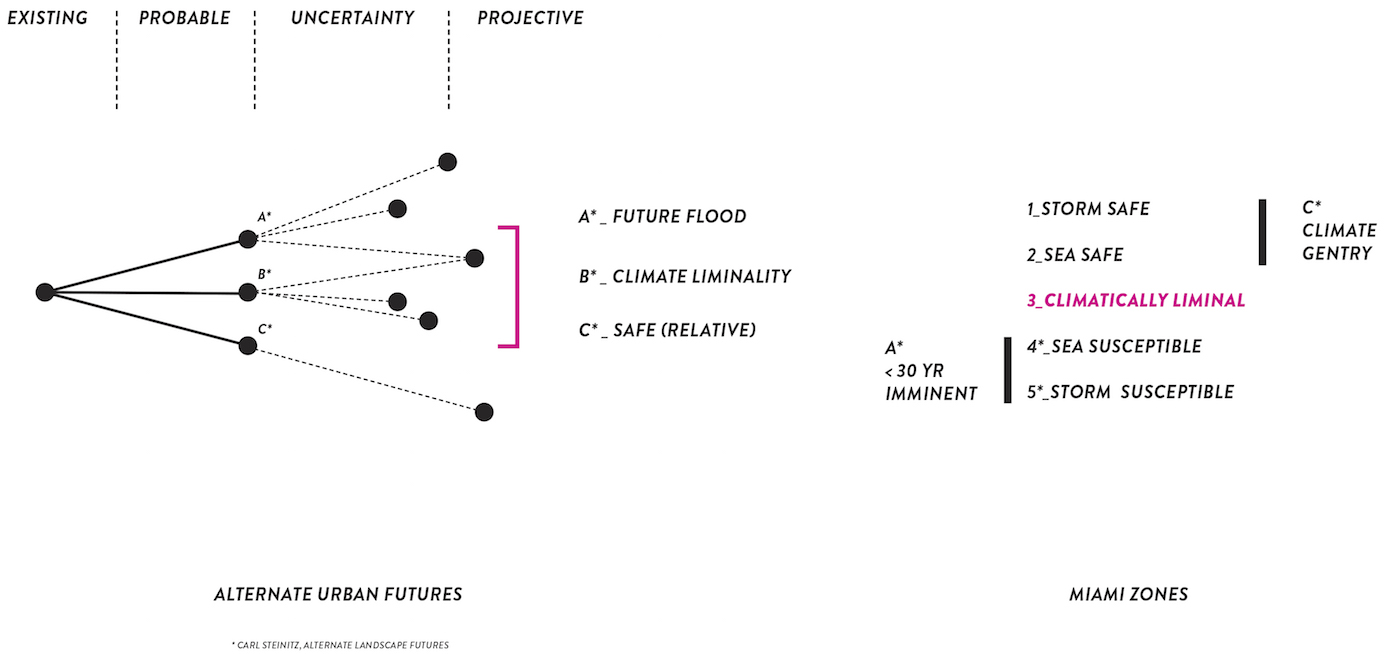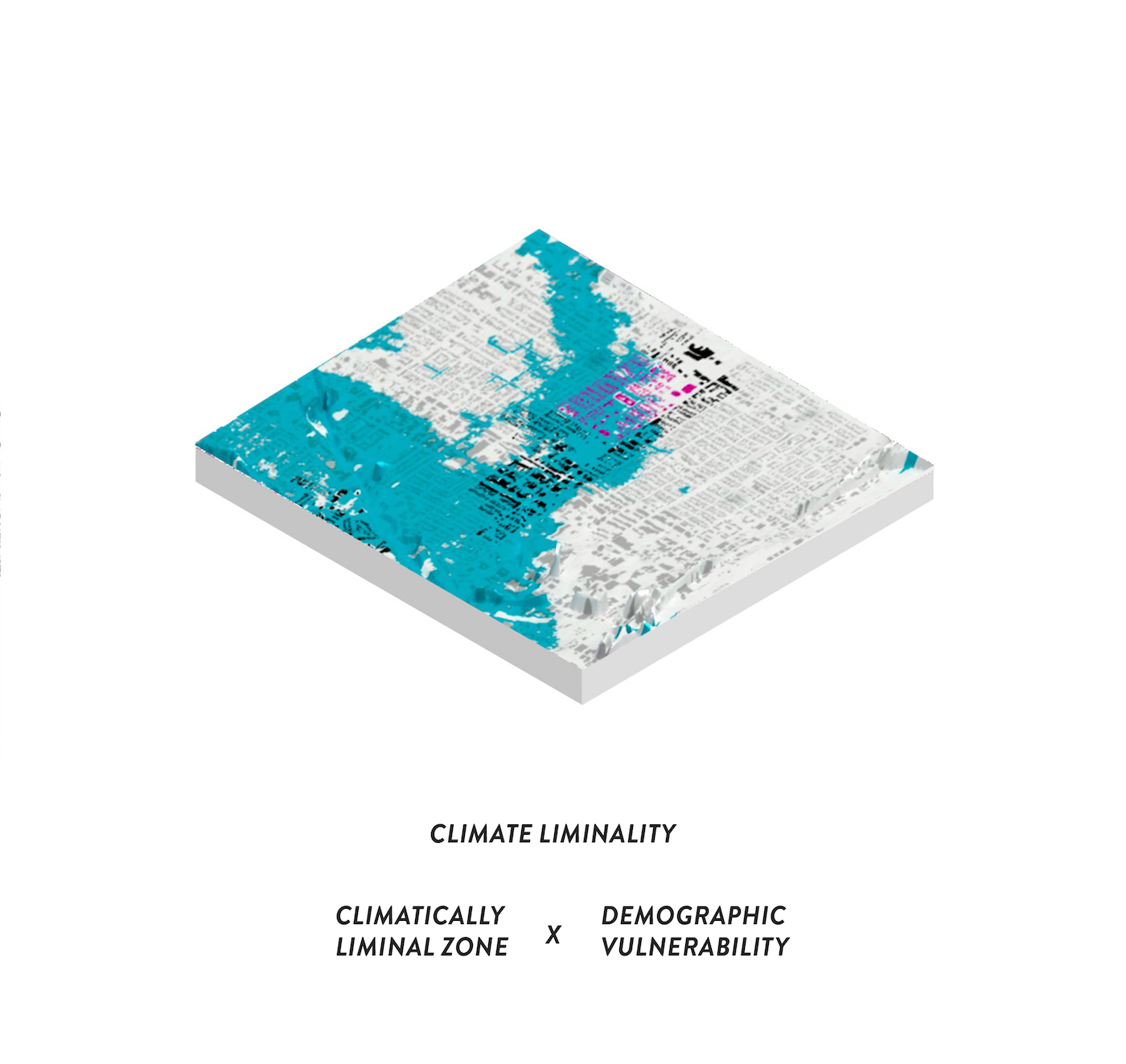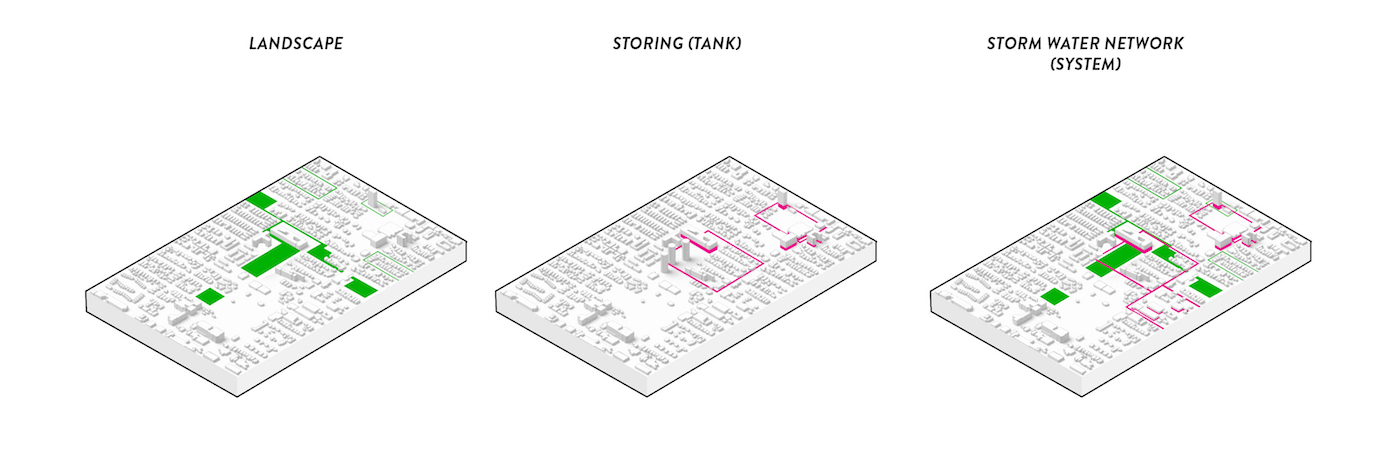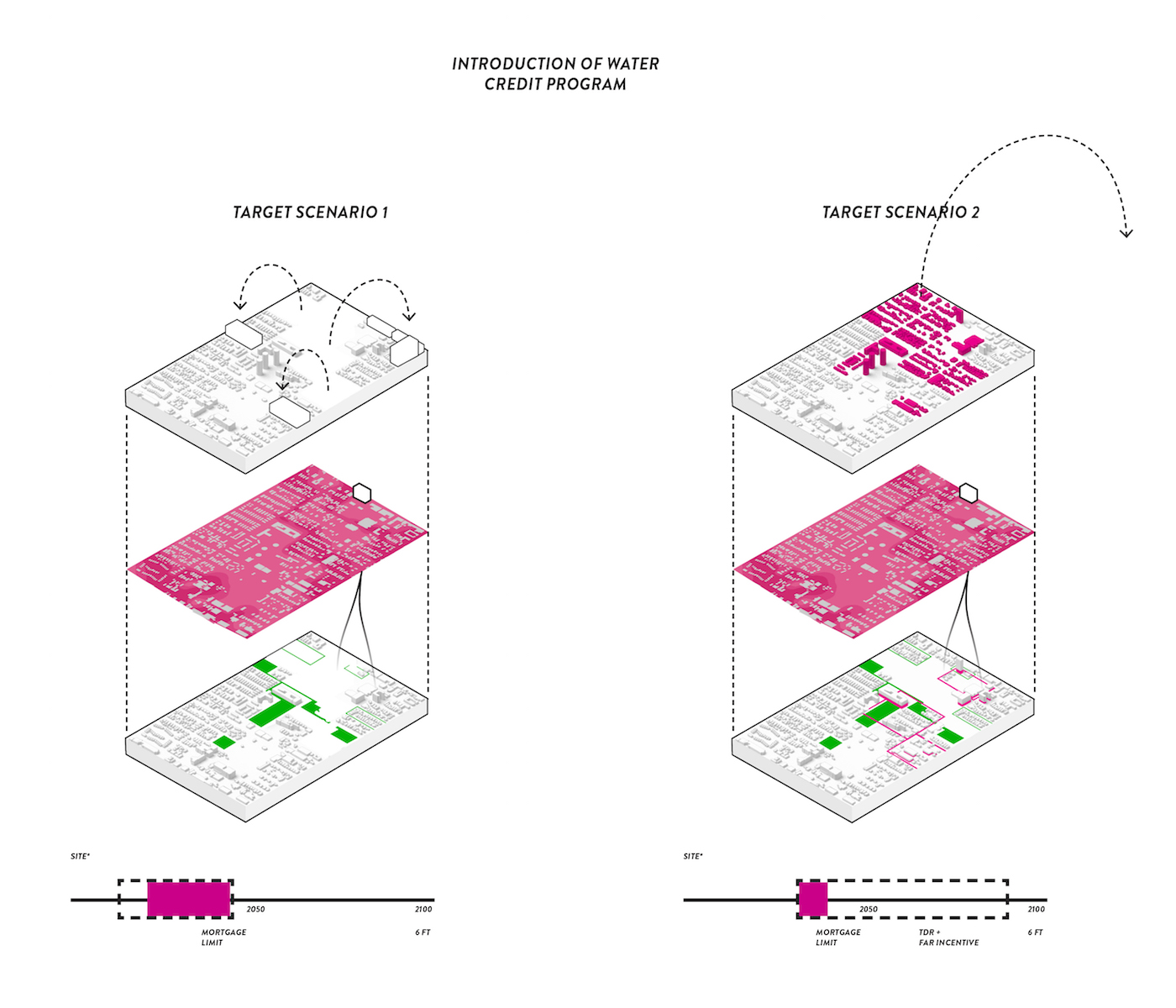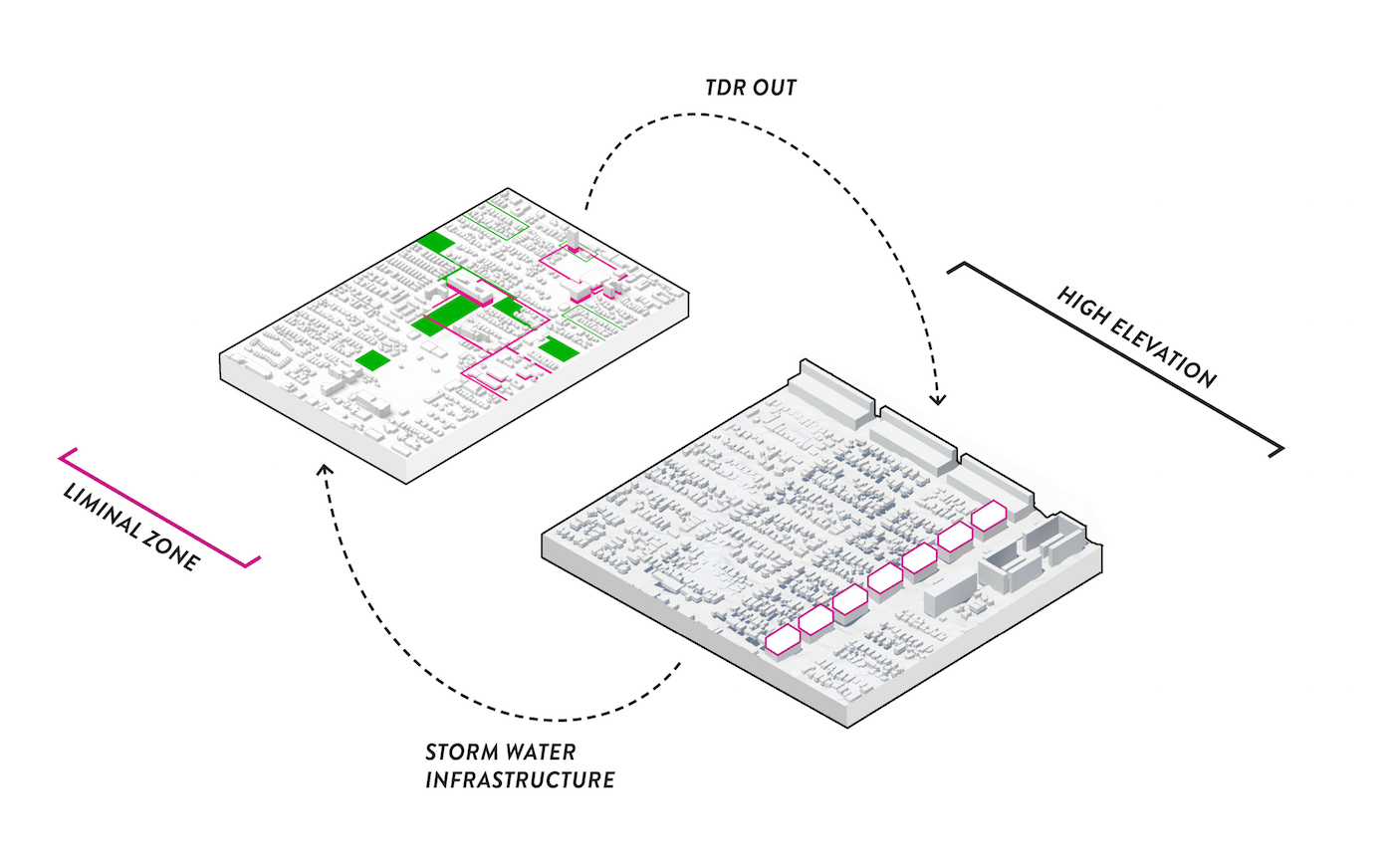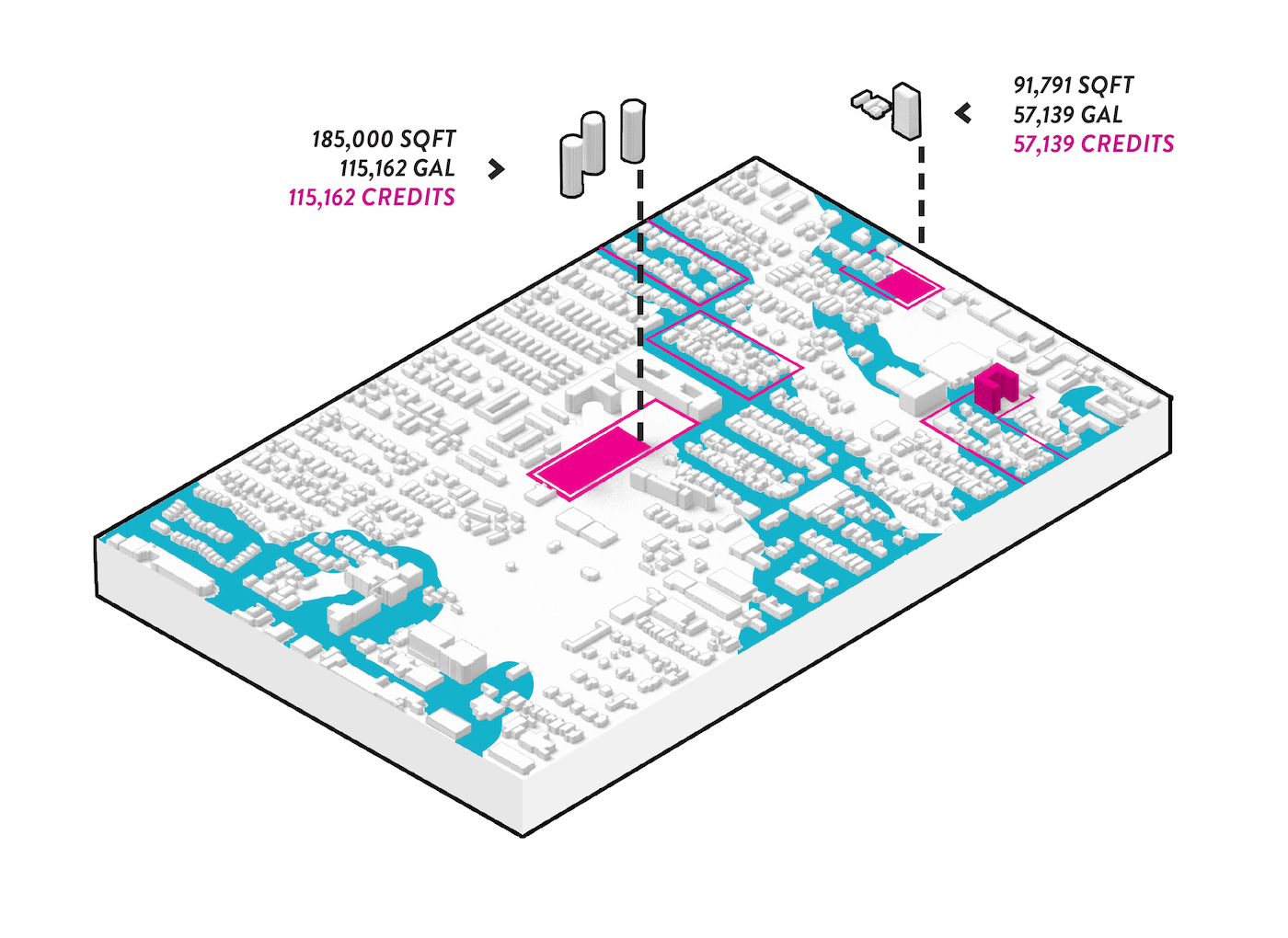Climate Liminality: The Future Land-Water Interface
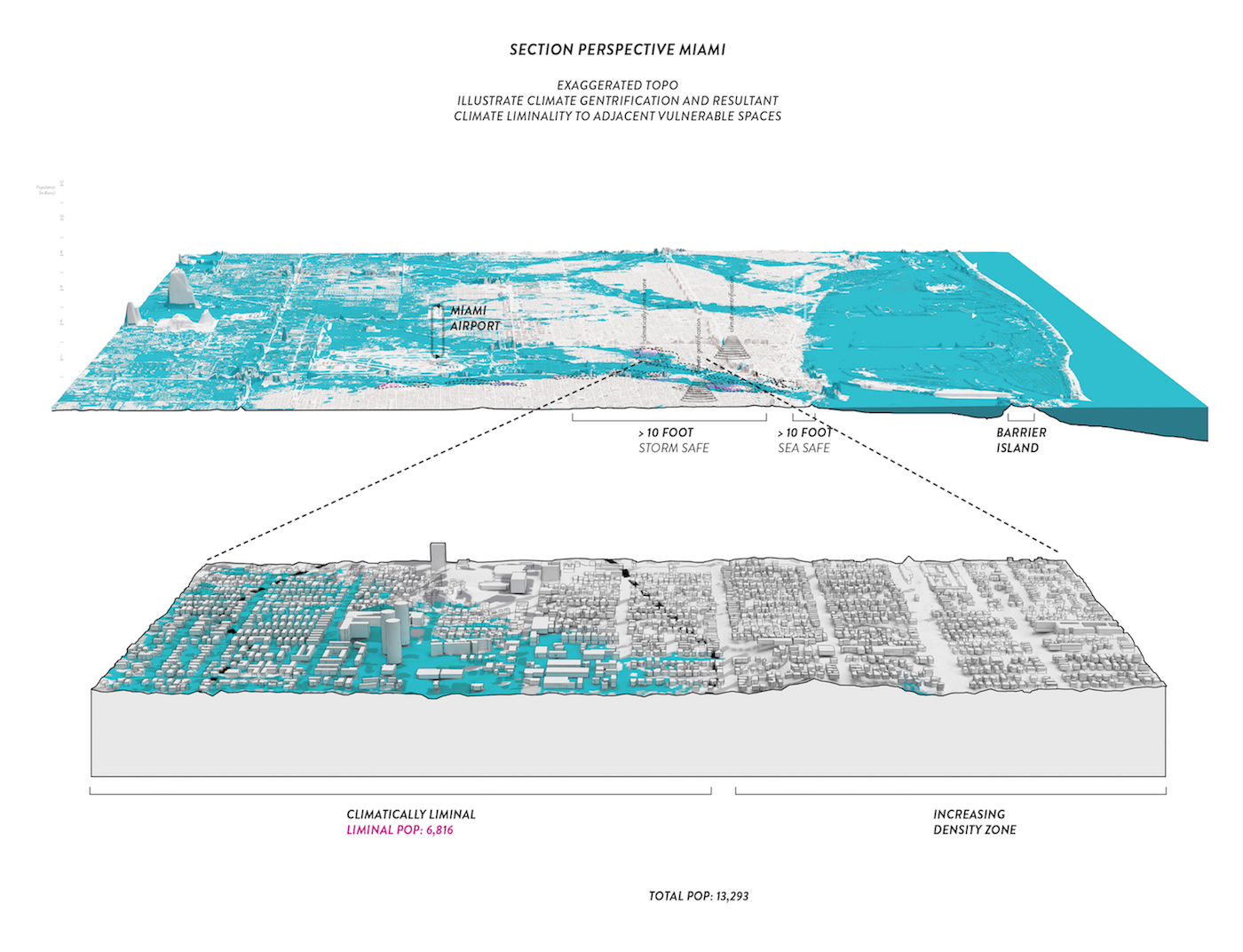
by Hayden White (MAUD ’18)
This project proposes a tactic for the valorization of storm risk through the creation of storm water credits. These credits are utilized by vulnerable residents in ‘climatically liminal’ zones. Climatically liminal spaces of the urban area are spaces that previously held ecological values that have been destroyed, lending them to heightened risk of ecological and climate risk. The residents of climatically liminal spaces are economically immobile and are typically more physically immobile, elevating their level of risk. Residents will be outwith agencies boundary of initial investment and will be unable to relocate to gentrified high ground – locking them into an area that is increasingly susceptible to future losses.
A Storm Water Credit (SRC) scheme, coupled with transferable development rights (TDR) can create two avenues for relocation of vulnerable communities.
Avenue one targets short term mortgage lease where residents pool properties collectively to construct storm infrastructure and relocate from immediate risk zone to the periphery, taking their TDR with them. Generation of storm water credits (SRC’s) can recoup long term debts before effective inundation. This strategy works within Miami’s 2030 loan cut off (existing limitation).
In the second avenue developers collectivize and relocate residents, turning the land into SRC’s to satisfy credit obligations. Developers rehouse residents in high elevation zones that they own, thereby increasing land density. Developers receive 10% bonus FAR of commercial units for each vulnerable residential unit relocated. This scheme may extend the 2030 limit of development loans due to the increased adaptive capacity inherent in scheme.
At a practical scale the scheme offers multiple avenues for the relocation of vulnerable communities. Yet, at the theoretical level the scheme allows capital forces to become entangled with terrestrial climatic conditions through the valorization of storm risks. Over the longer term this scheme can create a cascading availability heuristic. This projects objectives to increase the adaptive capacity of vulnerable urban coastal areas through deep capital/ecological entanglement – meaning that if one system orients or shifts in a particular way, the other system will immediately orient in a complimentary way.
